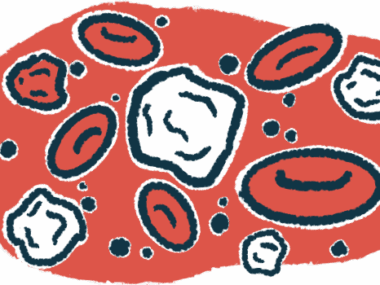Categories for DEB wounds do not capture their complexity: Study
Understanding how DEB wounds heal is key to assessing new treatments
Written by |

Wounds in people with dystrophic epidermolysis bullosa (DEB) are complex and dynamic, and current categories to define such wounds do not capture the full range of their activity, according to an analysis.
Researchers note that recognizing and understanding how wounds heal in people with DEB is critical to assessing the efficacy of novel treatments.
The study, “Wound behavior in dystrophic epidermolysis bullosa: A retrospective natural history case series,” was published in the Journal of the American Academy of Dermatology.
Epidermolysis bullosa is marked by fragile skin that blisters easily in response to a minor injury or friction, such as rubbing or scratching. In DEB, mutations in the COL7A1 gene lead to a deficiency of type VII collagen, a protein that helps anchor skin layers together.
Wounds in DEB traditionally been categorized as chronic or recurrent
Wounds in DEB patients have traditionally been categorized as chronic when they last more than three months, or recurrent when they reappear within 12 weeks of healing.
“However, these two terms alone do not capture the full array of DEB wound activity, particularly that seen beyond 12 weeks,” the researchers wrote.
Another issue is that previous studies have monitored wounds monthly, which may not be often enough to detect the frequent changes that happen in wounds.
In the new study, researchers at Stanford University School of Medicine, Krystal Biotech, and Veterans Affairs Medical Center in Palo Alto assessed how wound healing progresses in untreated DEB patients.
Specifically, they analyzed data from DEB patients in the placebo group of the Phase 3 GEM-3 clinical trial (NCT04491604). This was one of the studies that paved the way for the approval of Vyjuvek, a gene therapy gel marketed by Krystal.
The researchers examined 18 DEB wounds in 13 patients over a period of 26 weeks, or about six months. The goal was to assess the percentage of wound closure relative to the wound area seen at the start of the trial.
27.8% of wounds classified as chronic, 61.1% as recurrent in analysis
The analysis classified 27.8% of the wounds as chronic and 61.1% as recurrent. Two wounds resolved completely and remained closed throughout follow-up.
To grasp the dynamics of wound healing, the researchers looked closely at wound area measured on a weekly basis. This analysis “revealed the highly dynamic nature of wound behavior from week to week.”
Four wound behavior patterns were identified according to frequency (how often wounds reopen after healing) and amplitude, or the degree of wound reopening. Specifically, 11.1% were categorized as low amplitude/low frequency; 16.7% as low amplitude/high frequency; 50% as high amplitude/low frequency; and 22.2% as high amplitude/high frequency.
When translating these findings into the clinic, the investigators identified high amplitude as the reappearance of blisters which “may correspond to increased pain and decreased quality of life for patients.”
“We now understand that chronicity and healing are not mutually exclusive; for instance, many high amplitude high frequency wounds are chronic yet exhibit a significant amount of healing activity,” the scientists added.
“As new DEB treatments emerge, understanding the amplitude and frequency of wound reopening will provide investigators with a systematic framework for determining more accurate endpoints [outcome measures] and better assessing the effect of future interventions on the natural history of DEB wounds,” they concluded.







